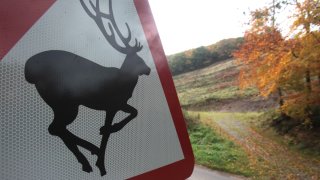
Maine's traditional fall hunting seasons are in full swing, but hunters are being asked to avoid eating their game in parts of the state because of the possibility of harmful chemicals in animal meat.
Hunters from around the Northeast trek each autumn to Maine, where deer and wild turkeys are two of the most popular game animals. The Maine Department of Inland Fisheries and Wildlife said it has issued a “do not eat wildlife consumption advisory” in several communities in the central part of the state.
The department said in a statement that it sampled wildlife in the area and found they had levels of PFAS in their muscle tissue that warranted the advisory. PFAS, or per- and polyfluoroalkyl substances, are chemicals that persist in the environment and are linked to human health problems including cancer and low birth weight.
“The advisory areas encompass areas that have been contaminated by high levels of PFAS through the spreading of municipal and/or industrial sludge that contained PFAS. Deer and turkey feeding in these contaminated areas have ingested these chemicals and now have PFAS in their meat and organs,” the department said Thursday.
The advisory covers portions of Unity, Unity Township, Albion and Freedom, in addition to existing advisory areas in Fairfield and parts of Skowhegan, the department said. The department said it based the advisory on the testing of 54 deer and 55 turkeys for the presence of PFAS. The advisory arrived not long before the state's popular “resident only day” for deer hunters on Nov. 2.
It's unknown how long the advisories will stay in place. The department said New Hampshire, Michigan and Wisconsin have also issued consumption advisories regarding PFAS and deer.
Maine was one of the first states to detect PFAS in deer. The presence of the “forever chemicals” in wildlife and fish has been increasing as a focus for public health regulators in recent years.
Local
PFAS substances have long been used in household products such as non-stick cookware and food packaging. The chemicals are also used in firefighting foams and appear in some fertilizers. Federal authorities have also taken actions to try to limit PFAS pollution amid concerns about the substances appearing in food, drinking water systems and private wells.



